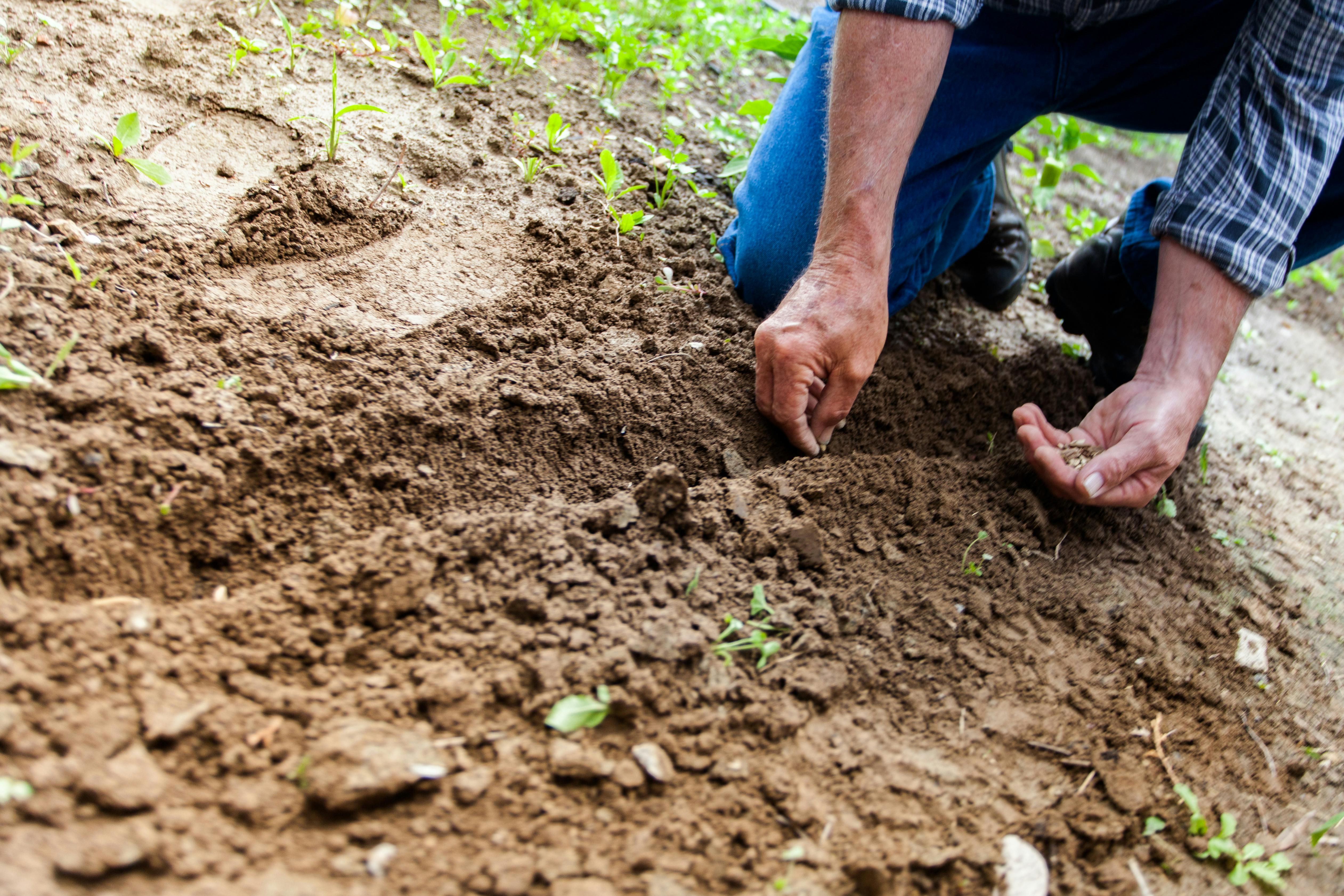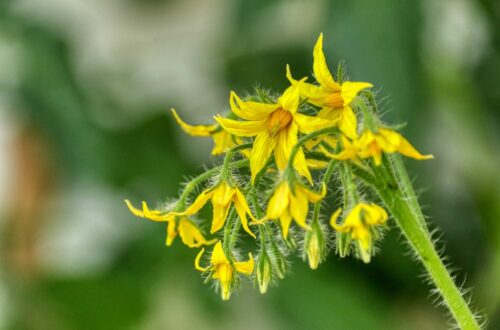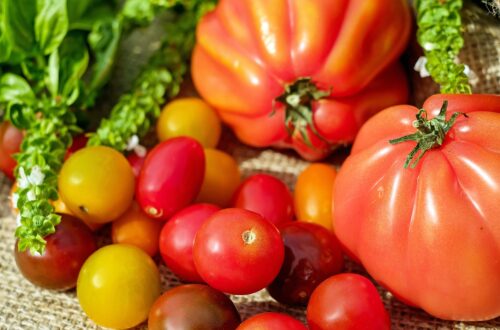
When Is the Best Time for Planting Tomatoes in (2024)?
Table of Contents
Tomatoes are a garden favorite known for their versatility, flavor, and nutritional value. Whether you’re growing beefsteaks for summer sandwiches or cherry tomatoes for salads, knowing when to plant is crucial for a successful harvest. This guide explores the optimal timing for planting tomatoes, covering factors like temperature, sunshine, maturity, and specific planting timelines. We’ll also provide tips for an abundant harvest and proper harvesting techniques.
Timing is everything when it comes to planting tomatoes. Plant too early, and you risk frost damage; plant too late, and your tomatoes might not have enough time to mature before the first frost. By understanding the right conditions and timing, you can ensure your tomatoes thrive, producing a bountiful crop that rewards your efforts.
The Importance of Timing
Tomatoes are sensitive to environmental conditions, particularly temperature and light. Planting at the right time ensures your tomatoes have the best chance of strong growth, optimal fruiting, and disease resistance. Here are key considerations to keep in mind:

- Last Frost Date:
- Significance: Planting tomatoes after the last frost date is essential, as frost can damage or kill young plants.
- Action: Check local frost dates and wait until the danger of frost has passed before planting.
- Soil Temperature:
- Significance: Tomatoes thrive in warm soil, ideally between 60-70°F (15-21°C).
- Action: Use a soil thermometer to check the temperature and ensure it is consistently warm before planting.
- Day Length and Sun Exposure:
- Significance: Tomatoes require 6-8 hours of sunlight daily for optimal growth.
- Action: Plant in a location that receives ample sunlight, especially in the morning to avoid afternoon heat stress.
- Weather Conditions:
- Significance: Consistent warm weather supports flowering and fruit setting.
- Action: Plant when temperatures consistently stay above 50°F (10°C) at night to prevent growth delay.
- Plant Maturity:
- Significance: Start seeds indoors 6-8 weeks before transplanting to ensure plants are mature and strong.
- Action: Follow seed packet instructions and consider your regional climate when starting seeds indoors.
By carefully timing your tomato planting, you can create the ideal environment for growth, maximize yield, and enjoy a successful gardening season.
Temperature: The Key to Successful Tomato Planting
Temperature is the most crucial factor when deciding when to plant tomatoes. Tomatoes are warm-season crops that thrive in consistent warm temperatures. Here’s what you need to know about temperature requirements:
Soil Temperature
Tomatoes require warm soil to grow effectively. Aim for a soil temperature of 60°F (15°C) or higher before planting. Use a soil thermometer to check the temperature at a depth of 2-3 inches.

Air Temperature
- Daytime: Ideal daytime temperatures range between 70-85°F (21-29°C). If daytime temperatures consistently fall below 60°F, consider waiting before planting.
- Nighttime: Nighttime temperatures should not drop below 50°F (10°C). Consistently low night temperatures can stunt growth and delay fruiting.
Frost Risk
Tomatoes are frost-sensitive. Ensure all risk of frost has passed before planting outdoors. Check local frost dates and weather forecasts to determine the last expected frost date in your area.
Effects of Temperature Extremes
- Cold Stress: Temperatures below 50°F (10°C) can cause stunted growth, poor fruit set, and increased susceptibility to diseases.
- Heat Stress: Temperatures above 90°F (32°C) can lead to blossom drop, reduced fruit set, and sunscald on fruits. Provide shade or mulch to mitigate heat stress.
Sunshine: Maximizing Growth and Yield
Sunlight is essential for photosynthesis, and tomatoes require plenty of it for vigorous growth and fruit production. Here’s how to ensure your tomatoes get enough sunshine:
Full Sun Exposure
Tomatoes need 6-8 hours of direct sunlight daily. Choose a planting site that receives unobstructed sunlight, avoiding shaded areas by trees, buildings, or other structures. Insufficient sunlight can lead to leggy plants and poor fruit development.
Orientation and Spacing
- North-South Orientation: Arrange tomato rows north to south to maximize sunlight exposure throughout the day.
- Proper Spacing: Space tomato plants appropriately to prevent shading and promote air circulation. For determinate varieties, space plants 18-24 inches apart; for indeterminate varieties, space them 24-36 inches apart.

Managing Excessive Sunlight
In extremely sunny regions, provide afternoon shade or use shade cloth during peak heat to prevent sunscald on fruits. This is especially important for young plants and those with thin foliage.
Days to Maturity: Planning Your Planting Schedule
Understanding the days to maturity for different tomato varieties is essential for planning your planting schedule. Days to maturity indicate the time it takes from planting to harvesting ripe fruit.
Determinate vs. Indeterminate Varieties
- Determinate Varieties: Typically mature in 60-80 days. They produce a single, concentrated harvest. Ideal for canning and preserving.
- Indeterminate Varieties: Take 80-100+ days to mature, producing fruit continuously throughout the growing season.
Choosing the Right Varieties
Select varieties based on your local climate and growing season length:
- Short Growing Season: Opt for early-maturing varieties like ‘Early Girl’ or ‘Stupice.’
- Long Growing Season: Try heirlooms like ‘Brandywine’ or ‘Cherokee Purple’ for extended harvests.
Calculating Planting Time
To calculate your planting schedule, determine your area’s average last frost date and count backward from your chosen variety’s days to maturity. This ensures that your tomatoes have sufficient time to mature before the first fall frost.
When to Plant Seeds Indoors
Starting tomato seeds indoors allows you to get a head start on the growing season, ensuring healthy transplants ready for outdoor planting. Here’s a step-by-step guide to indoor seed starting:
Timing for Indoor Seed Starting
Start tomato seeds indoors 6-8 weeks before the average last frost date in your area. This gives seedlings ample time to develop before transplanting outdoors.
Preparing for Indoor Seed Starting
- Seed Selection: Choose varieties suited to your climate and preferences.
- Containers: Use seed trays, peat pots, or recycled containers with drainage holes.
- Seed Starting Mix: Use a sterile, lightweight seed starting mix to prevent disease.
- Light Source: Provide ample light using grow lights or a bright south-facing window.
Indoor Seed Starting Process
- Sowing Seeds: Sow seeds 1/4 inch deep in the seed starting mix. Moisten the soil and cover trays with a humidity dome or plastic wrap to retain moisture.
- Temperature: Maintain a consistent temperature of 70-75°F (21-24°C) for germination.
- Lighting: Once seedlings emerge, provide 14-16 hours of light daily.
- Thinning: Thin seedlings to one per pot to prevent overcrowding.
- Transplanting: Transplant seedlings into larger pots once they develop two true leaves.
Hardening Off Seedlings
Before moving seedlings outdoors, acclimate them to outdoor conditions through a process called hardening off:
- Gradual Exposure: Begin 1-2 weeks before transplanting. Place seedlings outdoors in a sheltered area for a few hours, gradually increasing exposure over several days.
- Temperature: Avoid exposing seedlings to temperatures below 50°F (10°C) during hardening off.
- Wind Protection: Protect seedlings from strong winds during this transition period.
When to Plant Tomatoes Outdoors
Transplanting seedlings at the right time is crucial for successful growth. Here’s how to determine when to plant tomatoes outdoors:
Ideal Timing for Outdoor Planting
Plant tomato seedlings outdoors when:
- Frost Risk: All risk of frost has passed.
- Soil Temperature: Soil temperatures consistently reach at least 60°F (15°C).
- Nighttime Temperatures: Night temperatures remain above 50°F (10°C).
Regional Considerations
- Southern Regions: In mild climates, plant tomatoes as early as February or March.
- Northern Regions: In cooler areas, wait until late May or early June for outdoor planting.
- Coastal Areas: Coastal regions with moderate temperatures can plant earlier, but monitor night temperatures closely.
Planting Technique
- Preparation: Harden off seedlings and prepare planting holes enriched with compost or balanced fertilizer.
- Depth: Bury seedlings deeper than they were in pots, covering the stem up to the first set of leaves to encourage root development.
- Spacing: Follow recommended spacing for your variety to ensure proper air circulation.
- Watering: Water thoroughly after planting to settle the soil around the roots.
Protecting Young Plants
- Row Covers: Use floating row covers to shield young plants from unexpected cold snaps or wind.
- Mulching: Apply mulch to retain soil moisture and moderate temperature fluctuations.
Tips for an Abundant Harvest
Achieving a bountiful tomato harvest involves more than just planting at the right time. Here are some additional tips to maximize your yield:
Pruning and Training
- Pruning: Remove suckers (small shoots that develop between the main stem and leaves) to direct energy toward fruit production.
- Training: Use stakes, cages, or trellises to support indeterminate varieties, keeping plants upright and improving air circulation.
Mulching and Watering
- Mulching: Apply mulch to retain soil moisture, suppress weeds, and maintain consistent soil temperatures.
- Watering: Ensure consistent watering, providing 1-2 inches of water per week. Water deeply at the base of the plant to promote deep root growth.
Fertilization
- Balanced Nutrition: Use a balanced fertilizer with equal parts nitrogen, phosphorus, and potassium during the growing season.
- Phosphorus Boost: Increase phosphorus during flowering to encourage fruit set.
- Avoid Overfertilization: Excessive nitrogen can lead to lush foliage but poor fruit production.
Pest and Disease Management
- Regular Monitoring: Inspect plants regularly for signs of pests or diseases.
- Natural Predators: Encourage beneficial insects like ladybugs to control aphids and other pests.
- Organic Treatments: Use organic pesticides and fungicides as needed, following label instructions for application.
Crop Rotation
Practice crop rotation by avoiding planting tomatoes in the same spot year after year. Rotate with non-solanaceous crops like beans or lettuce to reduce disease buildup in the soil.

How to Harvest Tomatoes
Harvesting tomatoes at the right time ensures peak flavor and quality. Follow these guidelines for proper harvesting:
Harvest Timing
- Ripeness Indicators: Harvest tomatoes when they reach full color and yield slightly to gentle pressure. For the best flavor, pick them fully ripe.
- Vine Ripening: Allow tomatoes to ripen on the vine for maximum sweetness. However, if frost or pests threaten
, pick partially ripe tomatoes and ripen indoors.
Harvesting Technique
- Tools: Use clean, sharp scissors or pruners to avoid damaging the plant.
- Cutting: Cut the fruit from the vine, leaving a small stem attached to prevent damage.
- Handling: Handle tomatoes gently to avoid bruising and store them at room temperature until ready to use.
Post-Harvest Care
- Ripening Indoors: For green tomatoes, place them in a paper bag with a banana or apple to speed up ripening.
- Storing: Store ripe tomatoes at room temperature away from direct sunlight. Avoid refrigerating, as cold temperatures can affect flavor and texture.
Frequently Asked Questions about Planting Tomatoes.
What is the best time to plant tomatoes outside?
The best time to plant tomatoes outside depends on your local climate and the last expected frost date in your region. Generally, tomatoes should be planted outdoors when the soil has warmed to at least 60°F (15°C) and nighttime temperatures consistently stay above 50°F (10°C). This typically occurs 1-2 weeks after the last frost date in spring. To ensure healthy growth, consider hardening off your seedlings by gradually exposing them to outdoor conditions over a period of 7-10 days. This transition helps reduce transplant shock and allows the plants to acclimate to the outdoor environment, promoting robust development and successful fruiting.
What seasons do tomatoes grow best in?
Tomatoes thrive in warm seasons and are best grown during the following times:
- Spring:
- Optimal Planting Time: As temperatures begin to rise and frost danger has passed, spring is ideal for planting tomatoes outdoors. Seedlings are typically transplanted after the last frost date. In regions with mild winters, starting seeds indoors 6-8 weeks before the last frost date helps ensure a robust start.
- Summer:
- Peak Growth Period: Summer provides the warm temperatures tomatoes need for vigorous growth and fruit production. With consistent watering and proper care, plants flourish, delivering abundant harvests.
- Fall:
- Extended Growing Season: In warmer climates or with the use of season extenders like row covers and greenhouses, tomatoes can be grown into early fall. Choose early-maturing varieties for fall planting to ensure they ripen before cooler temperatures set in.
Tomatoes require temperatures between 70°F and 85°F (21°C to 29°C) during the day and no lower than 50°F (10°C) at night for optimal growth.
How long do tomatoes take to grow?
The time it takes for tomatoes to grow from seed to harvest depends on the variety and growing conditions. Generally, the process spans 60 to 100 days, broken down into key growth stages:
- Germination (5-10 days):
- Seeds sprout in 5 to 10 days, given optimal soil temperatures of 70°F to 80°F (21°C to 27°C). Moisture and warmth are crucial for successful germination.
- Seedling Stage (2-3 weeks):
- After germination, seedlings grow for 2-3 weeks indoors or in a controlled environment until they develop strong roots and leaves.
- Transplantation and Vegetative Growth (4-6 weeks):
- Seedlings are transplanted outdoors once the soil is warm and frost-free. During the next 4-6 weeks, plants focus on leaf and stem growth, requiring adequate sunlight, water, and nutrients.
- Flowering and Fruiting (45-80 days):
- Depending on the variety, tomatoes begin flowering and setting fruit 45 to 80 days post-transplant. Harvest is ready when fruits reach full color and firmness. Early-maturing varieties like cherry tomatoes ripen faster, while larger types may take longer.
Do tomatoes need sun or heat to grow?
Tomatoes require both sun and heat to grow successfully, as these elements are crucial for their development and fruit production:
- Sunlight:
- Essential for Photosynthesis: Tomatoes need full sun exposure, ideally 6 to 8 hours of direct sunlight per day, to maximize photosynthesis, which is vital for healthy growth and fruit yield. Insufficient sunlight can lead to leggy plants and reduced fruit production.
- Heat:
- Optimal Temperature Range: Tomatoes thrive in warm temperatures, with an optimal daytime range of 70°F to 85°F (21°C to 29°C) and nighttime temperatures no lower than 50°F (10°C). Heat is crucial for proper pollination, flowering, and fruit setting. Prolonged exposure to temperatures below 50°F can stunt growth, while excessively high temperatures above 95°F (35°C) may cause blossom drop or sunscald on fruits.
Therefore, choosing a sunny location with warm temperatures is critical for a bountiful tomato harvest, ensuring plants receive the light and heat they need to flourish.
How do you prepare soil for tomatoes?
Proper soil preparation is essential for growing healthy and productive tomato plants. Here are key steps to ensure optimal soil conditions:
- Soil Testing:
- Assess pH and Nutrient Levels: Conduct a soil test to determine pH levels and nutrient content. Tomatoes thrive in slightly acidic soil with a pH range of 6.0 to 6.8. Amend the soil accordingly to adjust the pH and add necessary nutrients.
- Soil Enrichment:
- Incorporate Organic Matter: Improve soil fertility and structure by adding organic matter, such as compost, well-rotted manure, or peat moss. This enriches the soil with essential nutrients and enhances its ability to retain moisture.
- Drainage Improvement:
- Avoid Waterlogging: Ensure good drainage by incorporating sand or perlite into heavy clay soils. Raised beds are also beneficial for improving drainage in poorly draining areas.
- Soil Aeration:
- Loosen Compacted Soil: Till or double-dig the soil to a depth of 12-15 inches to aerate it, allowing roots to penetrate easily and promoting healthy growth.
- Mulching:
- Maintain Moisture and Temperature: Apply a layer of organic mulch, such as straw or wood chips, to conserve soil moisture, regulate temperature, and suppress weeds, ensuring optimal growing conditions for tomatoes.
What’s the latest you can plant tomatoes?
The latest time you can plant tomatoes largely depends on your local climate and growing season. Here are some considerations to keep in mind:
- Frost-Free Period:
- Calculate the Growing Window: Determine your area’s first expected fall frost date and count backward based on the tomato variety’s days to maturity, which can range from 60 to 100 days. This ensures that the plants have enough time to mature and produce fruit before frost arrives. In cooler climates, the latest planting date is typically mid- to late July. For warmer regions, tomatoes can often be planted as late as August or early September.
- Season Extenders:
- Utilize Protective Measures: If planting late, consider using season extenders like row covers, cloches, or greenhouses to protect plants from early frosts and cooler temperatures. These tools help maintain a warmer microclimate, allowing for later planting.
- Fast-Maturing Varieties:
- Select Early Varieties: Choose quick-maturing tomato varieties like ‘Early Girl’ or ‘Cherry’ tomatoes that ripen in 50 to 70 days, maximizing the remaining growing season and increasing the chances of a successful harvest.
Which month is best to grow tomatoes?
The best month to plant tomatoes varies depending on your climate zone and local frost dates. Here’s a general guideline based on different regions:
- Northern Hemisphere (Temperate Climates):
- April to May: In temperate regions, like the U.S. and parts of Europe, tomatoes are typically planted outdoors in late April to May. This timing aligns with the end of frost risk and when soil temperatures consistently reach at least 60°F (15°C).
- Northern Hemisphere (Tropical/Subtropical Climates):
- February to March or August to September: In warmer climates, such as southern Florida or southern California, tomatoes can be planted in late winter or early spring (February to March) and again in late summer (August to September) for a fall harvest.
- Southern Hemisphere:
- September to November: In regions like Australia and parts of South America, the ideal planting window is from September to November, coinciding with spring’s arrival.
Starting seeds indoors 6-8 weeks before the last frost date ensures a robust start, enabling seedlings to be transplanted outdoors at the right time.
Do tomatoes grow best in morning or afternoon sun?
- Morning Sun:
- Promotes Early Photosynthesis: Morning sunlight kickstarts photosynthesis, providing energy for growth and development. This early exposure ensures the plant maximizes daylight hours for essential biological processes.
- Dries Moisture: Morning sun helps dry dew and moisture on the leaves, reducing the risk of fungal diseases such as blight and powdery mildew.
- Afternoon Sun:
- Heat Requirement: Tomatoes thrive in warmth, and afternoon sun contributes to maintaining ideal temperatures, particularly in cooler climates. However, in very hot regions, too much afternoon sun can stress plants and lead to sunscald on fruits.
Providing tomatoes with at least 6 to 8 hours of sunlight, with emphasis on morning exposure, ensures healthy, vigorous growth and abundant fruit production. If possible, position tomato plants to receive morning sunlight with some afternoon shade, especially in regions with intense heat.
Which climate is best for tomatoes?
Tomatoes thrive best in climates characterized by warm temperatures and ample sunlight. Ideal conditions include:
- Temperature:
- Daytime: Tomatoes flourish in temperatures ranging from 70°F to 85°F (21°C to 29°C). These temperatures promote robust growth and efficient fruit development.
- Nighttime: Consistent nighttime temperatures above 50°F (10°C) are essential. Lower temperatures can stunt growth and reduce fruit production.
- Sunlight:
- Full Sun Exposure: Tomatoes require at least 6-8 hours of direct sunlight per day to produce healthy plants and abundant fruit. Full sun conditions ensure optimal photosynthesis and vigorous growth.
- Humidity:
- Moderate Humidity: Tomatoes prefer moderate humidity levels. High humidity can increase the risk of fungal diseases, while very dry conditions may necessitate additional watering.
In summary, a warm, sunny climate with consistent temperatures and moderate humidity is ideal for growing tomatoes. However, with proper care and protection, tomatoes can be grown successfully in various climates.
When to cover tomato plants at night?
- Frost Protection:
- When to Cover: Cover tomato plants if a frost or freeze is forecasted. Frost can damage or kill tomato plants, so use frost blankets or cloths to shield them when temperatures are expected to drop below 32°F (0°C).
- Cold Weather:
- Temperature Threshold: Even when frost is not expected, cover plants if nighttime temperatures fall below 50°F (10°C) for extended periods, especially for young or sensitive plants.
- Wind and Heavy Rain:
- Protection Against Elements: Covering plants can also provide protection from harsh winds or heavy rain, which can damage the plants and cause soil erosion.
Ensure covers are removed during the day to allow sunlight and air circulation, preventing overheating and moisture buildup. Regular monitoring of weather forecasts helps determine when to cover and uncover your tomato plants effectively.
Should you plant tomatoes in the morning or evening?
Morning Planting:
- Optimal Conditions: Planting in the morning is generally preferred. Cooler temperatures and the absence of intense afternoon heat reduce transplant shock, allowing plants to acclimate better. Morning planting also gives the plants the entire day to adjust to their new environment before experiencing the stress of full sun exposure.
- Better Moisture Management: Soil is typically cooler and more moist in the morning, which helps prevent dehydration and supports root establishment.
Evening Planting:
- Less Ideal: Planting in the evening can expose plants to overnight cold, which might stress young seedlings. Additionally, reduced light can delay the acclimatization process.
Do tomatoes grow better in a greenhouse or outside?
Whether tomatoes grow better in a greenhouse or outside depends on several factors:
- Greenhouse Cultivation:
- Controlled Environment: Greenhouses provide a controlled environment with consistent temperatures, humidity, and protection from pests and extreme weather. This can result in higher yields, extended growing seasons, and potentially better fruit quality. They are particularly advantageous in cooler climates or for early planting.
- Cost and Maintenance: However, greenhouses require significant investment and ongoing maintenance.
- Outdoor Cultivation:
- Natural Conditions: Outdoor tomatoes benefit from natural sunlight and can be more cost-effective. They often produce a rich flavor due to natural pollination and environmental stressors. In warmer climates, outdoor growing is ideal for long growing seasons and less need for supplemental lighting.
- Risk Factors: They are more exposed to pests, diseases, and unpredictable weather conditions.
In summary, greenhouse growing offers controlled conditions for potentially higher yields, while outdoor cultivation is more cost-effective and may yield better-tasting tomatoes, depending on local climate conditions.
Conclusion
Timing is crucial for planting tomatoes successfully. By understanding temperature, sunlight, days to maturity, and specific planting schedules, you can enjoy a thriving tomato garden that yields delicious, home-grown produce. With these guidelines and tips for an abundant harvest, you’re well-equipped to grow your own tomatoes with confidence and success. Happy planting!




